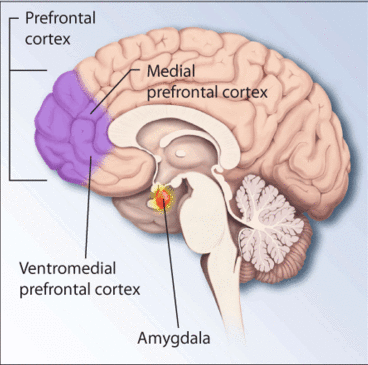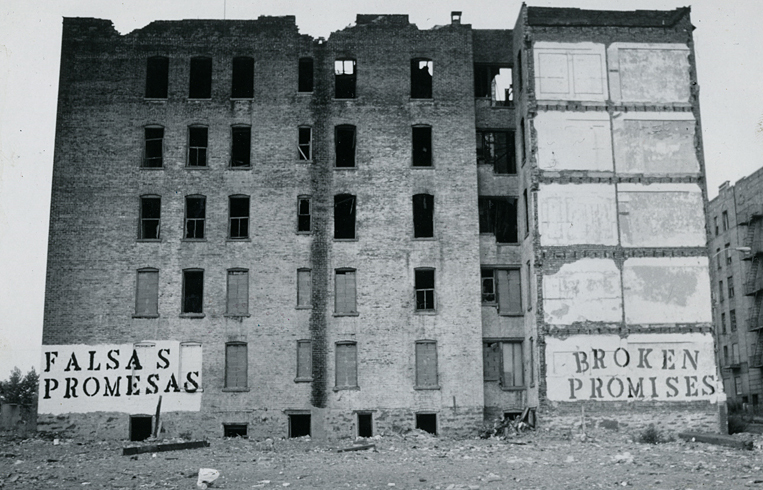|
Aporophobia
Aporophobia (from the Spanish ''aporofobia'', and this from the Ancient Greek ἄπορος (''áporos''), 'without resources, indigent, poor,' and φόβος (''phobos''), 'hatred' or 'aversion') are negative attitudes and feelings towards poverty and poor people. It is the disgust and hostility toward poor people, those without resources or who are helpless. by the philosopher Adela Cortina, professor of Ethics and Political Philosophy at the University of Valencia, to differentiate this attitude from xenophobia, which only refers to the rejection of foreigners, and racism, which is discrimination by ethnic groups. The difference between aporophobia and xenophobia or racism is that socially there is no discrimination or marginalization of immigrants or members of other ethnic groups when these people have assets, economic resources and/or social and media relevance. After a decision of French Parliament on the 24 of June of 2016, it was added to the list of discriminations fo ... [...More Info...] [...Related Items...] OR: [Wikipedia] [Google] [Baidu] |
Poverty
Poverty is the state of having few material possessions or little income. Poverty can have diverse social, economic, and political causes and effects. When evaluating poverty in statistics or economics there are two main measures: '''' compares income against the amount needed to meet basic personal needs, such as [...More Info...] [...Related Items...] OR: [Wikipedia] [Google] [Baidu] |
Economic Discrimination
Economic discrimination is discrimination based on economic factors. These factors can include job availability, wages, the prices and/or availability of goods and services, and the amount of capital investment funding available to minorities for business. This can include discrimination against workers, consumers, and minority-owned businesses. It is not the same as price discrimination, the practice by which monopolists (and to a lesser extent oligopolists and monopolistic competitors) charge different buyers different prices based on their willingness to pay. History A recognition of economic discrimination began in the British Railway Clauses Consolidation Act of 1845, which prohibited a common carrier from charging one person more for carrying freight than was charged to another customer for the same service. In nineteenth-century English and American common law, discrimination was characterized as improper distinctions in economic transactions; in addition to the above ... [...More Info...] [...Related Items...] OR: [Wikipedia] [Google] [Baidu] |
Poverty
Poverty is the state of having few material possessions or little income. Poverty can have diverse social, economic, and political causes and effects. When evaluating poverty in statistics or economics there are two main measures: '''' compares income against the amount needed to meet basic personal needs, such as [...More Info...] [...Related Items...] OR: [Wikipedia] [Google] [Baidu] |
Adela Cortina
Adela Cortina (born 1947, Valencia) is a Spanish philosopher A philosopher is a person who practices or investigates philosophy. The term ''philosopher'' comes from the grc, φιλόσοφος, , translit=philosophos, meaning 'lover of wisdom'. The coining of the term has been attributed to the Greek th .... Biography After studying philosophy and letters in the Universidad de Valencia, she was admitted into the department of metaphysics in 1969. In 1976, she defended her doctoral thesis on the notion of God in Kant's transcendental philosophy and during some time she taught at middle schools and highschools. A research scholarship allowed her to go to the University of Munich, where she got acquainted with critical rationalism, pragmatism and marxist ethics and, more concretely, with the philosophy of Jurgen Habermas and Karl-Otto Apel. Upon coming back to the Spanish scholar scene, she devoted her research time to ethics. In 1981, she was admitted in the department o ... [...More Info...] [...Related Items...] OR: [Wikipedia] [Google] [Baidu] |
Xenophobia
Xenophobia () is the fear or dislike of anything which is perceived as being foreign or strange. It is an expression of perceived conflict between an in-group and out-group and may manifest in suspicion by the one of the other's activities, a desire to eliminate their presence, and fear of losing national, ethnic, or racial identity.Guido Bolaffi. ''Dictionary of race, ethnicity and culture''. SAGE Publications Ltd., 2003. Pp. 332. Alternate definitions A 1997 review article on xenophobia holds that it is "an element of a political struggle about who has the right to be cared for by the state and society: a fight for the collective good of the modern state." According to Italian sociologist Guido Bolaffi, xenophobia can also be exhibited as an "''uncritical exaltation of another culture''" which is ascribed "''an unreal, stereotyped and exotic quality''". History Ancient Europe An early example of xenophobic sentiment in Western culture is the Ancient Greece, Ancient G ... [...More Info...] [...Related Items...] OR: [Wikipedia] [Google] [Baidu] |
Racism
Racism is the belief that groups of humans possess different behavioral traits corresponding to inherited attributes and can be divided based on the superiority of one race over another. It may also mean prejudice, discrimination, or antagonism directed against other people because they are of a different race or ethnicity. Modern variants of racism are often based in social perceptions of biological differences between peoples. These views can take the form of social actions, practices or beliefs, or political systems in which different races are ranked as inherently superior or inferior to each other, based on presumed shared inheritable traits, abilities, or qualities. There have been attempts to legitimize racist beliefs through scientific means, such as scientific racism, which have been overwhelmingly shown to be unfounded. In terms of political systems (e.g. apartheid) that support the expression of prejudice or aversion in discriminatory practices or laws, racist i ... [...More Info...] [...Related Items...] OR: [Wikipedia] [Google] [Baidu] |
Phobias
A phobia is an anxiety disorder defined by a persistent and excessive fear of an object or situation. Phobias typically result in a rapid onset of fear and are usually present for more than six months. Those affected go to great lengths to avoid the situation or object, to a degree greater than the actual danger posed. If the object or situation cannot be avoided, they experience significant distress. Other symptoms can include fainting, which may occur in blood or injury phobia, and panic attacks, often found in agoraphobia. Around 75% of those with phobias have multiple phobias. Phobias can be divided into specific phobias, social anxiety disorder, and agoraphobia. Specific phobias are further divided to include certain animals, natural environment, blood or injury, and particular situations. The most common are fear of spiders, fear of snakes, and fear of heights. Specific phobias may be caused by a negative experience with the object or situation in early childhood ... [...More Info...] [...Related Items...] OR: [Wikipedia] [Google] [Baidu] |
Class Discrimination
Class discrimination, also known as classism, is prejudice or discrimination on the basis of social class. It includes individual attitudes, behaviors, systems of policies and practices that are set up to benefit the upper class at the expense of the lower class. Social class refers to the grouping of individuals in a hierarchy based on wealth, income, education, occupation, and social network. History Class structures existed in a simplified form in pre-agricultural societies, but it has evolved into a more complex and established structure following the establishment of permanent agriculture-based civilizations with a food surplus. Classism started to be practiced around the 18th century. Segregation into classes was accomplished through observable traits (such as race or profession) that were accorded varying status and privileges. Feudal classification systems might include merchant, serf, peasant, warrior, priestly, and noble classes. Rankings were far from invariant wit ... [...More Info...] [...Related Items...] OR: [Wikipedia] [Google] [Baidu] |
Hostile Architecture
Hostile architecture is an urban-design strategy that uses elements of the built environment to purposefully guide or restrict behaviour. It often targets people who use or rely on public space more than others, such as youth, poor people, and homeless people, by restricting the physical behaviours they can engage in. Also known as defensive architecture, hostile design, unpleasant design, exclusionary design, and defensive urban design, the term hostile architecture is often associated with items like "anti-homeless spikes" – studs embedded in flat surfaces to make sleeping on them uncomfortable and impractical. This form of architecture is most commonly found in densely populated and urban areas. Other measures include sloped window sills to stop people sitting; benches with armrests positioned to stop people lying on them; water sprinklers that spray intermittently; and public trash bins with inconveniently small mouths to prevent the insertion of bulky wastes. Hostile arc ... [...More Info...] [...Related Items...] OR: [Wikipedia] [Google] [Baidu] |
White Flight
White flight or white exodus is the sudden or gradual large-scale migration of white people from areas becoming more racially or ethnoculturally diverse. Starting in the 1950s and 1960s, the terms became popular in the United States. They referred to the large-scale migration of people of various European ancestries from racially mixed urban regions to more racially homogeneous suburban or exurban regions. The term has more recently been applied to other migrations by whites, from older, inner suburbs to rural areas, as well as from the U.S. Northeast and Midwest to the milder climate in the Southeast and Southwest. The term 'white flight' has also been used for large-scale post-colonial emigration of whites from Africa, or parts of that continent, driven by levels of violent crime and anti-colonial or anti-white state policies. Migration of middle-class white populations was observed during the civil rights movement in the 1950s and 1960s out of cities such as Cleveland ... [...More Info...] [...Related Items...] OR: [Wikipedia] [Google] [Baidu] |
Slum Clearance
Slum clearance, slum eviction or slum removal is an urban renewal strategy used to transform low income settlements with poor reputation into another type of development or housing. This has long been a strategy for redeveloping urban communities; for example slum clearance plans were required in the United Kingdom in the Housing Act 1930, while the Housing Act of 1937 encouraged similar clearance strategies in the United States. Frequently, but not always, these programs were paired with public housing or other assistance programs for the displaced communities. Reasons Slum clearance is still practiced today in a number of different situations. During major international events like conferences and sporting competitions, governments have been known to forcefully clear low income housing areas, as a strategy to impress the international attention in an attempt to reduce the visibility of the host city's apparent poverty. Other attempts at slum clearance have been subject to other ... [...More Info...] [...Related Items...] OR: [Wikipedia] [Google] [Baidu] |
Social Cleansing
Social cleansing ( es, limpieza social) is social group-based killing that consists of the elimination of members of society who are considered "undesirable", including, but not limited to, the homeless, criminals, street children, the elderly, the disabled.Ordoñez 1996, p. 18.Schwartz 1995, p. 384.Sanford 2008, p. 110. This phenomenon is caused by a combination of economic and social factors, but killings are notably present in regions with high levels of poverty and disparities of wealth.Federici 2010, p. 12. Perpetrators are usually of the same community as the victims and they are often motivated by the idea that the victims are a drain on the resources of society.Federici 2010, p. 18. Efforts by national and local governments to stop these killings have been largely ineffective. The government and police forces are often involved in the killings, especially in South America. Causes Africa In African countries, social cleansing almost always takes the form of witch hunting wh ... [...More Info...] [...Related Items...] OR: [Wikipedia] [Google] [Baidu] |





.jpg)

